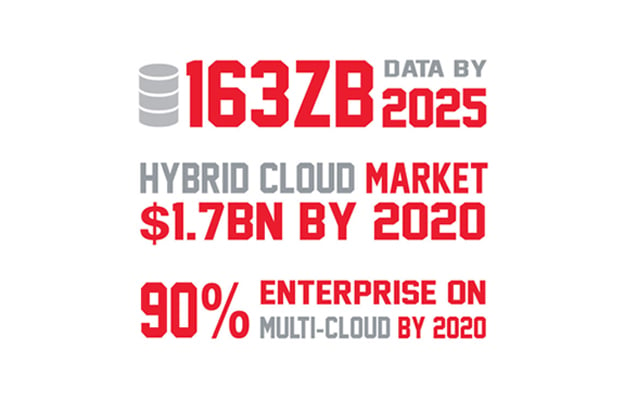Written by Jeff Arndt - Chief Information Officer
As a result of the challenges thrown at us this year, organisations around the globe have been forced to rethink strategies around the continuity of their business and services. Such radical changes to not only traditional ways of working, but how to best serve and stay engaged with customers have thrown a spanner in the works when it comes to the flexibility, resilience, and performance of business platforms.
When it comes to building an optimised IT platform, speed and agility have consistently appeared as important attributes in achieving operational efficiency and customer satisfaction, however the adverse effects of latency (or the data Round Trip Time - RTT) can be largely underestimated. Significant benefits can be achieved through network and infrastructure architecture that enables low latency, including the assurance of a consistent, repeatable, and reliable user experience. But it can often be easier said than done. With a scattered remote workforce and more digital customer encounters occurring, digital strategy also needs to be adjusted accordingly.
People don’t like to wait, so don’t make them
Depending on where you’re connecting to, the difference in latency may only be milliseconds, but this can compound and become significant. When it comes to digital experience, those fractions of a second in extra latency can have a very real impact on network performance and the ultimate customer experience.
Recent tests conducted by NEXTDC on our own Multi-Cloud architecture demonstrated that, on average, the data RTT decreased by as much as 66% when comparing direct connections to cloud, versus connectivity to cloud via the public Internet.
Imagine a shopping cart experience on your website. The e-commerce engine sits in AWS, your customer database sits in Microsoft Azure, your financials are in Oracle Cloud and your inventory and ERP systems are on premise. All these systems need to work together in real time in to successfully complete a transaction. If for example the RTT from your on-premises data centre to the cloud is 20ms, then it could easily take as much as 200ms to process and complete a transaction as multiple reads and writes are required in each system. If there are bandwidth constraints due to higher levels of traffic to your website, it could take even longer to process.
Putting a dollar figure on poor application performance has historically been difficult, however, tech giants have been able to quantify it. Greg Linden, now a Data Scientist at Microsoft, worked on performance testing at both Google and Amazon and can equate slowness to a real dollar value. His results were incredible: each 100ms that Amazon.com was slowed down resulted in a measurable drop of 1% of sales in A/B testing (where a control group gets the usual experience and another group gets the modified site).
At Google, tests ordered by Marissa Meyer, VP of Search and User Experience, to artificially slow down Google search found that adding just half a second (500ms) of delay to Google search resulted in 20% less traffic. The lesson, Meyer, said, was: “Speed matters. People do not like to wait. Do not make them.”
It starts with a connected remote workforce
Without a doubt, IT teams have been challenged and corporate environments put to the test with the need to swiftly scale remote work models. Perhaps one of the biggest shifts in thinking was the need to pivot from centralised to in-home workspaces, which presents its own set of accelerated challenges.
Remote work forces rely on public internet services which are prone to network instability, unpredictable performance, and saturated local connections. To add to this, network security and latency becomes an even bigger problem as data moves between local networks, the cloud, and corporate networks.
You can give your people the best tools in the market, but if your network can’t support them to collaborate, connect and share data quickly, productivity starts to break down, and ultimately it’s your customers and your staff who will pay the price. For much of the workforce now, working from anywhere has become our new reality. There is tremendous opportunity to apply a greater level of creative and innovative thinking to how we can work smarter and more efficiently. How businesses adapt and use this opportunity to re-think their approach to digital experience, will be a game changer
Discussions around latency and its effect on business performance is not a new thing. When you consider the heightened demand, congested corporate networks, and more customers communicating and engaging digitally - it may be time to sanity check you’re not only moving at pace, but heading in the right direction to support the new norm.
There’s been a radical shift in mindset around how we do business and deliver extraordinary encounters of the digital kind. There’s no business that doesn't rely on being interconnected to the things that matter most; data, applications, customers and your people. Finding the right solution that alleviates the strain on your corporate network and enables you to maintain complete control, whilst staying agile can be challenging. We understand the complexities and the obstacles our customers face, which is why NEXTDC are committed to helping you navigate these challenges, together. In conjunction with our partner ecosystem comprising >600 clouds, networks and ICT solutions providers, our collective community of expertise is best positioned to work with you and help you find the solution that enables you to better serve your remote employees and customers.
If you’re interested in exploring this further, reach out to me directly or contact one of our specialists.


